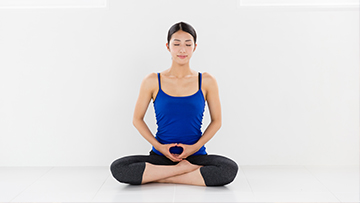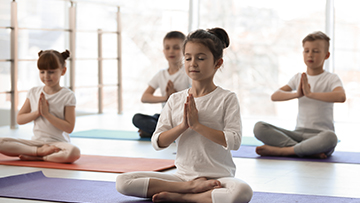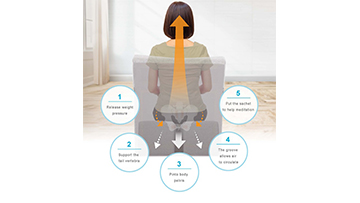Meditation Beginner's Guide
How to Find the Right Meditation Posture for You
As a meditation instructor with years of experience guiding students on their mindfulness journeys, I understand the importance of finding the right meditation posture. A suitable posture not only enhances your comfort but also significantly impacts the effectiveness of your meditation practice. This guide aims to help beginners navigate the process of finding a meditation posture that best suits their individual needs.
The Significance of Meditation Posture
Meditation is not just about calming the mind; it is also about aligning the body in a way that promotes sustained attention and deep relaxation. A proper meditation posture allows for better breathing, minimizes physical discomfort, and helps maintain a state of alert relaxation. It ensures that your energy flows freely, which is essential for reaching deeper states of meditation.
Core Elements of an Ideal Meditation Posture
- Spinal Alignment: The foundation of any good meditation posture is a straight spine. This alignment supports the free flow of energy and prevents physical discomfort that can arise from slouching or hunching.

- Comfort: A posture should be comfortable enough to hold for the duration of your meditation session. Discomfort can distract you and cut your practice short.
- Relaxation: Avoid unnecessary tension in your body, particularly in the shoulders, neck, and face. Your posture should promote a state of relaxed alertness.
Exploring Common Meditation Postures
-
Cross-Legged on the Floor
- Easy Pose (Sukhasana): Sit with your legs crossed and your knees lower than your hips. Use a cushion or folded blanket to elevate your hips, helping to maintain a natural curve in your spine.
- Half Lotus (Ardha Padmasana): This involves placing one foot on the opposite thigh while keeping the other foot under the opposite knee. It provides more stability but requires some flexibility.
-
Seated on a Chair
- This is a great option for those who find sitting on the floor uncomfortable. Ensure your feet are flat on the ground, and your back is straight yet relaxed against the chair. This posture is particularly beneficial for individuals with back or knee problems.
-
Kneeling (Seiza Position)
- Sit on your heels with your knees bent and your legs folded under you. Use a meditation bench or a cushion between your legs and buttocks to alleviate pressure on your knees and ankles.
-
Lying Down (Savasana)
- While less traditional for meditation, lying down can be suitable, especially for those with severe back issues. Keep your spine straight and your body relaxed. Be mindful of the tendency to fall asleep.
Practical Tips for Beginners
- Experiment with Different Postures: Try various postures to find the one that feels most natural and comfortable for you. Each body is unique, and what works for one person may not work for another.
- Utilize Props: Don’t hesitate to use cushions, bolsters, or chairs to support your posture. These props can help you maintain a comfortable and sustainable position.
- Listen to Your Body: Pay close attention to any signs of discomfort or pain. Adjust your posture as needed to avoid strain and ensure relaxation.
- Start Small: Begin with short meditation sessions and gradually increase the duration as your body becomes more accustomed to the posture.
- Seek Professional Guidance: If you’re uncertain about your posture, consider seeking advice from a meditation teacher or attending a class. Proper guidance can help you find the right posture more quickly and effectively.

Right meditation posture :
Finding the right meditation posture is a crucial step in establishing a successful meditation practice. By focusing on spinal alignment, comfort, and relaxation, you can create a posture that supports deep and focused meditation. Remember, there is no one-size-fits-all approach. It’s important to experiment, listen to your body, and use props to find what works best for you.As a beginner, be patient with yourself and allow time for your body to adjust. With practice and perseverance, you’ll discover the posture that enhances your meditation experience, helping you achieve greater peace, clarity, and well-being.
Happy meditating!